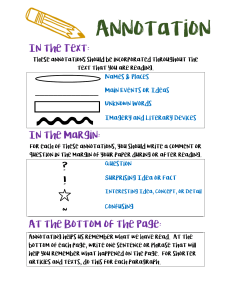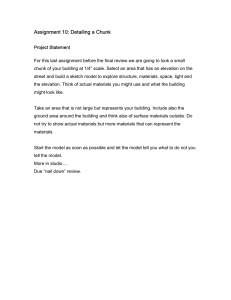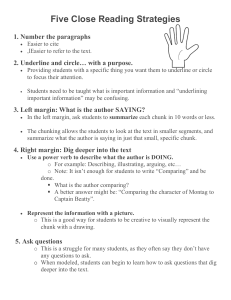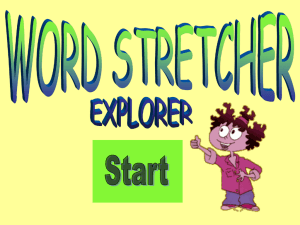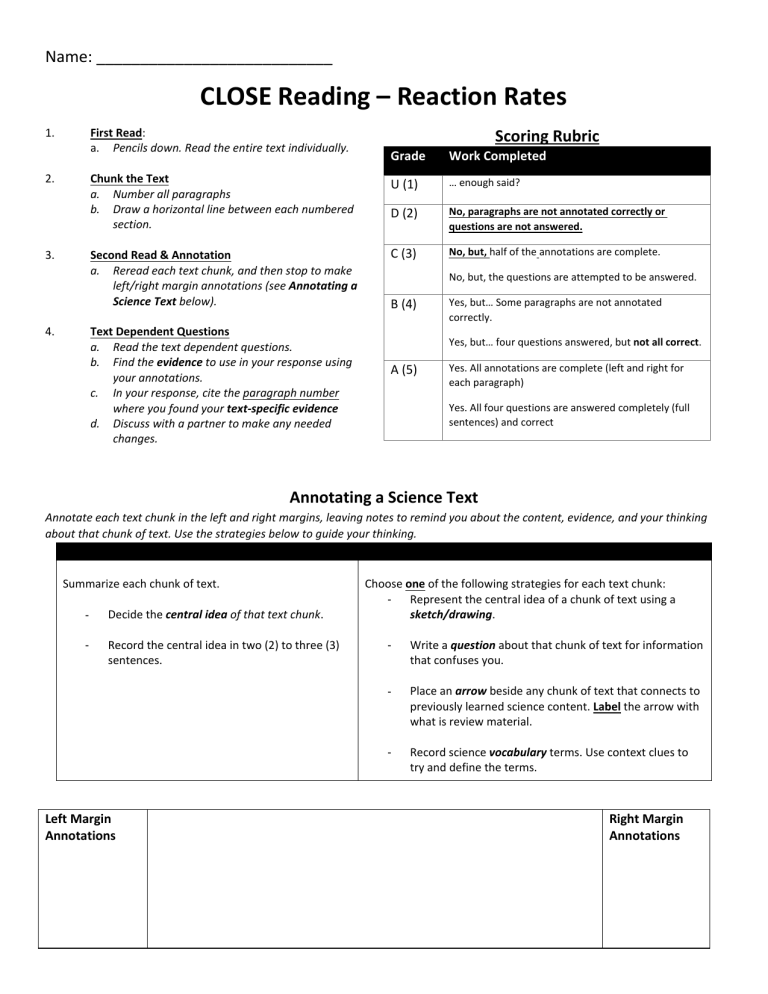
Name: ___________________________ CLOSE Reading – Reaction Rates 1. First Read: a. Pencils down. Read the entire text individually. 2. 3. 4. Scoring Rubric Grade Work Completed Chunk the Text a. Number all paragraphs b. Draw a horizontal line between each numbered section. U (1) … enough said? D (2) No, paragraphs are not annotated correctly or questions are not answered. Second Read & Annotation a. Reread each text chunk, and then stop to make left/right margin annotations (see Annotating a Science Text below). C (3) No, but, half of the annotations are complete. Text Dependent Questions a. Read the text dependent questions. b. Find the evidence to use in your response using your annotations. c. In your response, cite the paragraph number where you found your text-specific evidence d. Discuss with a partner to make any needed changes. No, but, the questions are attempted to be answered. B (4) Yes, but… Some paragraphs are not annotated correctly. Yes, but… four questions answered, but not all correct. A (5) Yes. All annotations are complete (left and right for each paragraph) Yes. All four questions are answered completely (full sentences) and correct Annotating a Science Text Annotate each text chunk in the left and right margins, leaving notes to remind you about the content, evidence, and your thinking about that chunk of text. Use the strategies below to guide your thinking. LEFT MARGIN Summarize each chunk of text. - Decide the central idea of that text chunk. - Record the central idea in two (2) to three (3) sentences. Left Margin Annotations RIGHT MARGIN Choose one of the following strategies for each text chunk: - Represent the central idea of a chunk of text using a sketch/drawing. - Write a question about that chunk of text for information that confuses you. - Place an arrow beside any chunk of text that connects to previously learned science content. Label the arrow with what is review material. - Record science vocabulary terms. Use context clues to try and define the terms. Right Margin Annotations STOP! Make sure you have completed all annotations before moving on! Check rubric for grading scale! Answer these questions using full sentences. Cite what paragraph you gain your information from. 1. What is meant by the term rate? How does one measure the rate of a chemical reaction? _______________________________________________________________ _______________________________________________________________ _______________________________________________________________ _______________________________________________________________ 2. Describe how chemical reactions are controlled by numbers of collisions of the reacting particles. _______________________________________________________________ _______________________________________________________________ _______________________________________________________________ _______________________________________________________________ 3. Give an example of a chemical reaction not listed in this reading. Then, determine at least two ways that the chemical reaction could be sped up. _______________________________________________________________ _______________________________________________________________ _______________________________________________________________ _______________________________________________________________ 4. What are enzymes? How do enzymes relate to the idea of catalysts that we studied in class? _______________________________________________________________ _______________________________________________________________ _______________________________________________________________ _______________________________________________________________
